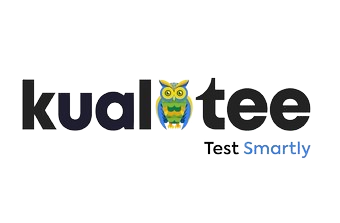Defect Tracking Tool
A Comprehensive Guide to Choosing the Best Defect Tracking Tool for Your Team
In the realm of software development, efficient defect tracking is critical to delivering high-quality products. With a myriad of tracking tools available, selecting the right one for your team can be daunting. This guide aims to help you navigate through the process, with a special focus on Kualitee, a powerful and versatile defect tracking tool.
Understanding Defect Tracking Tools
Defect tools, also known as bug tracking systems, are software applications that help teams record, report, and manage software defects. These tools streamline the process of identifying, documenting, and resolving bugs, ensuring a smoother development cycle and a higher quality end product.
When choosing a defect tracking tool, consider the following features:
- User-Friendly Interface: A tool that is easy to navigate can significantly reduce the learning curve for your team.
- Customization: The ability to customize fields, workflows, and reports to suit your team's specific needs.
- Integration Capabilities: Seamless integration with other tools in your development ecosystem, such as CI/CD pipelines, project management tools, and version control systems.
- Real-Time Collaboration: Features that support communication and collaboration among team members.
- Reporting and Analytics: Comprehensive reporting and analytics to monitor defect trends, team performance, and project health.
- Scalability: A tool that can grow with your team and project demands.
- Security: Robust security measures to protect your data.
Why Kualitee?
Kualitee stands out among defect tracking tools for several reasons. Here's a detailed look at what makes it a top choice for many development teams:
Intuitive User Interface The interface is designed to be user-friendly, making it accessible even for those who are not tech-savvy. The dashboard provides a clear overview of project status, recent activities, and critical metrics.
Customization and Flexibility They offer extensive customization options. You can tailor fields, workflows, and permissions to align with your team's processes. This flexibility ensures that the tool adapts to your workflow, not the other way around.
Seamless Integrations Their integrates smoothly with a range of tools, including JIRA, GitHub, and Jenkins. This ensures that your defect tracking is part of a cohesive development ecosystem, facilitating better coordination and efficiency.
Collaboration Features Real-time collaboration features in Kualitee allow team members to communicate effortlessly. You can assign tasks, comment on issues, and receive notifications, keeping everyone in the loop.
Robust Reporting and Analytics They provide powerful reporting tools that offer insights into defect trends, team performance, and project health. Customizable reports help you make data-driven decisions and improve your development process.
Scalability Whether you are a small team or a large enterprise, they can scale to meet your needs. Its flexible pricing plans and feature sets accommodate growing teams and complex projects.
Security With Their, your data is protected by industry-standard security measures, including encryption and regular backups. This ensures that your sensitive information remains secure.
How to Implement Kualitee in Your Workflow
Assess Your Needs Begin by assessing your team's requirements. Identify the key features you need and the integrations that are essential for your workflow.
Trial Period Take advantage of their trial period to explore its features and assess its suitability for your team. Use this time to involve team members and gather their feedback.
Customize and Integrate Customize to match your team's processes. Set up necessary integrations to ensure a seamless workflow.
Training and Onboarding Provide training for your team to ensure they are comfortable using the tool. They support and resources can be invaluable during this phase.
Monitor and Optimize Continuously monitor the use of Kualitee and gather feedback from your team. Use the insights from their reporting tools to optimize your defect-tracking process.
Conclusion
Choosing the right defect tracking tool is crucial for the success of your software development projects. They offer a robust, flexible, and user-friendly solution that can enhance your team's productivity and the quality of your products. By considering your specific needs and leveraging their powerful features, you can streamline your defect management process and deliver superior software products.
Embrace the power of efficient defect tracking with Kualitee and take your software development to the next level.
